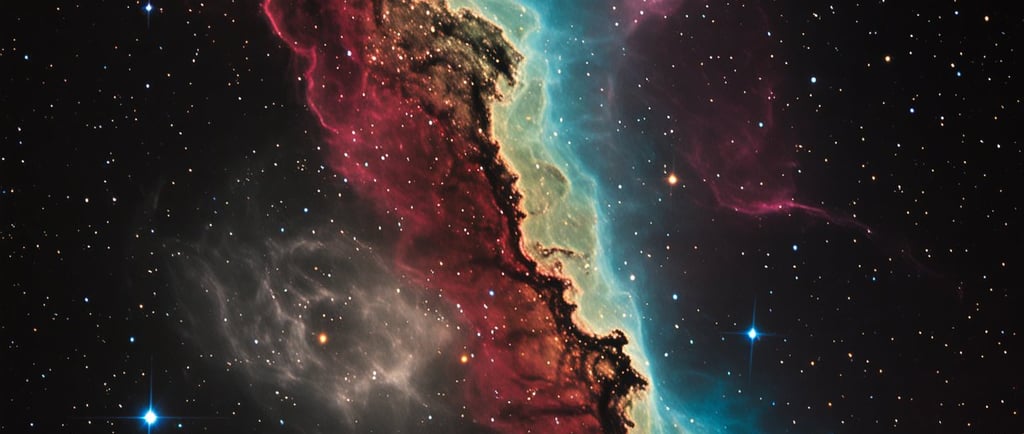The Herschel's Ray: The Pencil Nebula and Its Supernova Origins


Introduction to Herschel's Ray and the Pencil Nebula
The cosmos is home to many fascinating phenomena, and among them, Herschel's Ray and the Pencil Nebula stand out for their captivating beauty and scientific significance. Located within the Vela Supernova Remnant, these intricate structures are a testament to the cataclysmic events of a supernova that transpired approximately 11,000 years ago. This blog post delves into the complex origins, defining characteristics, and the ongoing impact of these celestial formations.
The Vela Supernova Remnant and Its Significance
The Vela Supernova Remnant is a vast expanse of gas and dust generated by a supernova explosion that marks the death of a massive star. This explosive event resulted in the dispersal of materials across the universe, contributing to a cycle of stellar evolution that ultimately leads to the formation of new celestial bodies. Herschel's Ray, a component of this remnant, is particularly notable due to its striking appearance and intricate structure, which can be observed through advanced astronomical instruments.
The Pencil Nebula: NGC 2736 and Its Characteristics
Within the confines of the Vela Supernova Remnant lies the Pencil Nebula, officially designated as NGC 2736. Its name derives from its elongated shape, resembling a pencil against the night sky. The nebula serves as a notable representation of the shock wave emanating from the supernova explosion. This shock wave consists of ionized gas that emits light at different wavelengths, allowing astronomers to study it across various spectra, providing insights into the conditions and processes triggered by the supernova.
As researchers continue to explore Herschel's Ray and the Pencil Nebula, they gain valuable information about the remnants of supernova explosions. The examination of these structures sheds light on the mechanics of star death, the materials contributed to the interstellar medium, and the formation of subsequent generations of stars and planets.
Conclusion: The Importance of Stellar Remnants in Cosmic Evolution
In summary, Herschel's Ray and the Pencil Nebula serve as poignant reminders of the universe's dynamic nature and the life cycle of stars. The Vela Supernova Remnant hosts these celestial formations, allowing us to peer into the events of our universe's past. Understanding these supernova remnants not only lends insight into our cosmic neighborhood but also contributes to a broader comprehension of stellar evolution across the cosmos. The ongoing studies of NGC 2736 reaffirm the significance of such structures in the complex tapestry of cosmic history.
